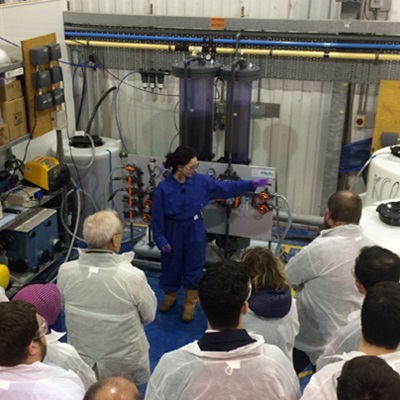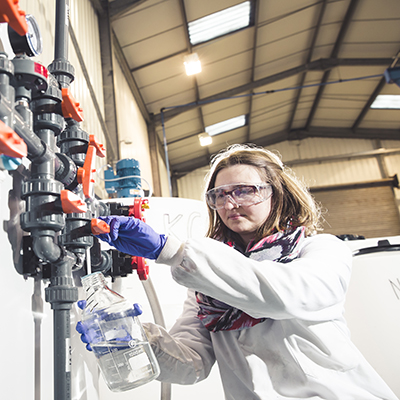- Dates6 September 2019-6 September 2022
- SponsorKnowledge Transfer Partnership and Warden Plastics Ltd
- Funded£300,000
- PartnersWarden Plastics Ltd
Summary
Biofilm technologies are frequently used in wastewater treatment plants to produce high quality effluents. Moving bed biofilm reactors (MBBRs) have been increasingly implemented for municipal and industrial wastewater treatment as they provide a robust, reliable and small foot-print treatment solutions. Existing infrastructure can be adapted to host moving biofilm processes with small modifications, suitable to upgrade conventional treatment, such as activated sludge process.
MBBRs use buoyant media with a large surface area to promote biofilm attachment and growth (i.e. heterotrophic and autotrophic bacteria growth). The addition of media to a wastewater reactor increases the microbial concentration and oxygen mass transfer, thus promoting biological reactions and enhanced effluent quality. In the case of aerobic treatment (e.g. COD/BOD removal and nitrification) aeration is supplied to maintain the media suspended and provide oxygen for microbial activity.
In anaerobic/anoxic treatment, mixing is achieved by a mechanical mixing or recirculation. Mixing in MBBRs is challenging as there is a potential for the media to became stagnant or the biofilm to de-attach in high shear conditions. When the media is not colonized and biofilm is not established, the media floats due to their lower density, compared to water. As microbial population starts to attach and develop on the media, they become heavier (e.g. greater density than water) and therefore mixing capabilities are improved. Thus, different media configuration can impact the performance of MBBRs.
Overview
Challenges faced by the wastewater industry include the compliance of stringent discharge limits described by the Urban Waste Water Directive and the Water Framework Directive, which specifies strict COD and nutrients discharge, that are granted on a case-by-case basis, but limits can be as low as 0.5 mg/L for P and 3 mg/L for N for discharging into sensitive water bodies. These limits are extremely difficult to achieve using conventional treatment processes such as activated sludge plants. Biofilm processes enhance the retention of bacteria to deliver high quality effluents offering environmentally friendly solutions.
A large range of different materials are used to manufacture media, e.g. polymeric reticulated foam, glass, plastics etc. The latter has been found to be an excellent scaffold for biofilm colonisation, owing to its attractive attributes such as longevity, resistance to decay, hydrophobicity and low-surface energy. The plastic materials most commonly used are polyethylene and polypropylene virgin or recycled plastics because they possess similar densities to that of water (0.94 to 1.02 g/cm3), allowing sufficient buoyancy and enabling good mixing. Media can also be manufactured with a wide variety of shapes: flat, spherical, square, honeycomb, saddle and chip. The ideal media for fast-growing aerobic heterotrophic biofilm has been showed to have wider openings to avoid loss of effective surface area caused by clogging.
In contrast, slow-growing autotrophic biofilm (nitrification) benefits in smaller openings and larger surface. As a result, available surface area increases, leading to the possibility of controlling biofilm thickness and, therefore, mainly active biofilm is retained, which leads to greater mass transfer and specific activity rates. However, when designing alternative media, manufacturers need to identify the best trade-off between production complexity and costs.
Progress update
The developed media is being tested at Cranfield's wastewater treatment plant in pilot-scale reactors fed with settled wastewater. The media is being evaluated in hydrodynamic and aeration tests, against different influent loads to study the efficiency of pollutant removal.





